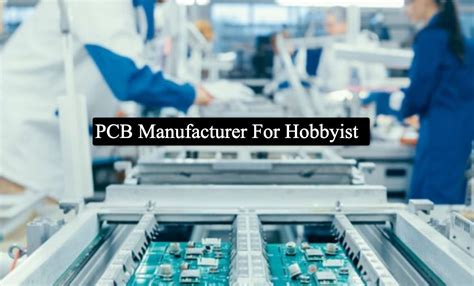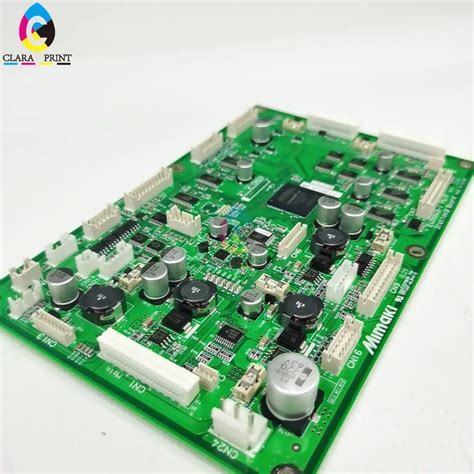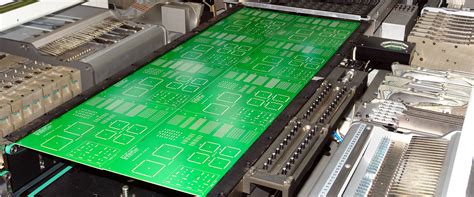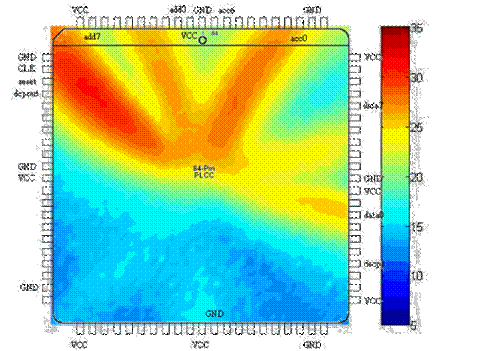Essential Guide to Hobbyist PCB Fabrication Techniques
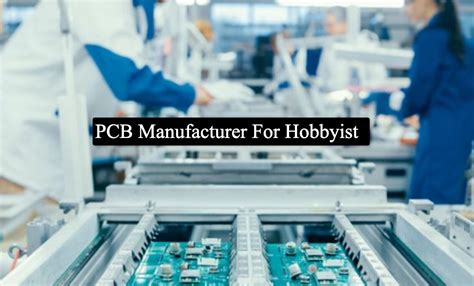
Key Takeaways
When diving into the world of hobbyist PCB fabrication, it’s crucial to understand the various aspects that contribute to the overall success of your projects. One of the most significant areas is the consideration of pcb manufacturing processes. You should familiarize yourself with different pcb manufacturing companies in your area and online, as they offer various services tailored to hobbyists’ needs. This can greatly influence your overall experience and project outcomes, especially when evaluating the pcb manufacturing cost which can vary widely based on complexity and volume.
Additionally, recognizing how to effectively communicate your design requirements can help ensure that you get the right service for your pcb manufacturing business model. Whether you’re designing for a one-off project or planning for larger scale production, understanding these fundamentals will determine the quality and functionality of your boards. Having a solid grasp on these key takeaways will empower you to approach PCB fabrication with confidence and informed decision-making.
| Aspect | Considerations |
|---|---|
| pcb Manufacturing Companies | Research local vs online options |
| Manufacturing Cost | Get quotes based on designs |
| Communication | Clearly define specifications |
| Production Scale | One-off vs bulk orders |
Taking these steps will not only enhance your skills but also improve your project outcomes significantly.
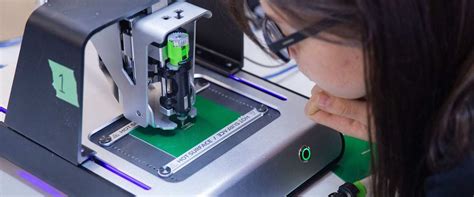
Introduction to Hobbyist PCB Fabrication
As a hobbyist venturing into PCB fabrication, you are entering a realm that blends creativity with technical skill. Understanding the significance of pcb manufacturing is crucial; it involves the processes and techniques used to create your own printed circuit boards, which can elevate the quality of your electronic projects. In today’s landscape, there are numerous pcb manufacturing companies that cater specifically to hobbyists, offering accessible resources to help you kickstart your journey. With the right approach, you can manage your pcb manufacturing cost, ensuring that your projects remain financially viable without compromising on quality.
Begin by familiarizing yourself with essential design principles that lay the groundwork for effective PCB layouts. Once you’ve developed your design, exploring various prototyping techniques will help you transition from concept to reality seamlessly. Keep in mind the value of selecting reputable vendors for your fabrication needs. It’s often advantageous to research and reach out to established service providers online, as they can provide insights into reliable pcb manufacturing practices and possibly connect you with smaller companies specializing in hobbyist needs.
“Finding a trusted pcb manufacturing business can be a game-changer; it allows you to focus on the creative aspects while ensuring quality craftsmanship in your boards.”
Through this exploration of hobbyist PCB fabrication, you’ll uncover not just the technicalities but also an enriching experience that celebrates innovation and experimentation in electronics.
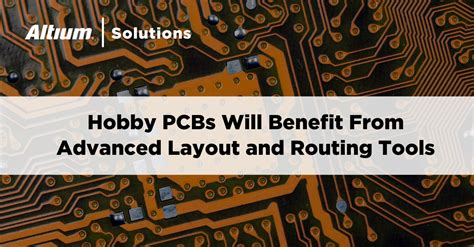
Key Design Principles for Effective PCB Layout
When you embark on the journey of pcb manufacturing, it’s crucial to grasp the fundamental design principles that govern an effective PCB layout. Firstly, consider the overall schematic of your project. A well-organized schematic goes a long way in simplifying the pcb manufacturing process. You should prioritize signal integrity by minimizing the distance between components that are interconnected; this can significantly reduce the noise and interference, ultimately enhancing performance.
Next, pay close attention to component placement. Grouping components by their function minimizes trace lengths and can contribute to a lower pcb manufacturing cost. Avoid clutter, as excessive overlap of traces can lead to issues during pcb manufacturing. Create clear pathways for your signal traces and power distribution; ensuring that high-frequency signals are routed with care will maintain their quality.
Additionally, don’t forget about thermal management. Proper placement and thermal dissipation techniques can prevent overheating, which is critical in avoiding component failure during both assembly and operation stages of your pcb manufacturing business.
Lastly, utilizing design rules checks (DRC) within your PCB design software will help ensure that your layout adheres to standards set by pcb manufacturing companies, safeguarding against potential errors that could affect production. By integrating these principles into your design process, you lay down a solid foundation for creating efficient and reliable printed circuit boards that meet your project goals.
Prototyping Techniques: From Concept to Creation
When venturing into pcb manufacturing, understanding the prototyping stage is crucial for ensuring your designs translate effectively from concept to finished product. As a hobbyist, you may start with a simple schematic that captures the functionality of your circuit. This phase involves using software tools to create your printed circuit board design, ensuring you adhere to key design principles and make the most of available space on the board. Once your design is ready, consider utilizing low-cost options for pcb manufacturing. Companies catering to hobbyists often provide services geared toward smaller runs and quick turnaround times, which is ideal for experimentation.
The first prototyping method you might explore is breadboarding, which allows for quick adjustments without committing to a PCB layout immediately. However, if you’re aiming for a more professional outcome, producing a prototype PCB becomes essential. This typically involves selecting one of the many pcb manufacturing companies that offer services at reasonable rates, keeping in mind aspects like pcb manufacturing cost and turnaround time.
When you’ve finalized your prototype design, uploading it to one of these companies can help streamline the process, allowing you to focus on testing and refining your project. You might also want to look into various PCB technologies—some companies offer specialized techniques that can enhance durability or performance of your board based on its intended application. Starting a pcb manufacturing business can be compelling if you find success with your personal projects and decide to transition from hobbyist endeavors into professional realms.
Finally, remember that prototyping is an iterative process; learning from each version not only improves your current project but lays a stronger foundation for future designs in the realm of pcb manufacturing. By applying these methods diligently, you will progress confidently in transforming inventive concepts into tangible products.
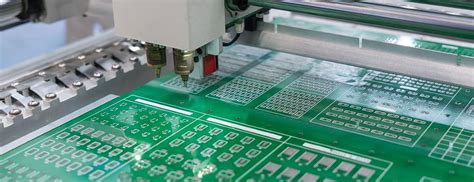
Selecting the Right PCB Vendor for Your Needs
When embarking on your journey into PCB fabrication, one of the most critical decisions you will make is selecting the right PCB vendor. With a multitude of PCB manufacturing companies available, it is essential to evaluate your specific needs and ensure that your vendor aligns with your project requirements. Start by considering the pcb manufacturing cost, as this can vary widely among different suppliers. Make sure to request quotes from multiple vendors to compare prices and understand what factors contribute to their pricing structures. Beyond cost, assess the vendor’s reputation for quality and reliability; look for those who offer extensive customer reviews or case studies showcasing their work. You might also want to inquire about their production capabilities—some companies excel in rapid prototyping while others may focus on high-volume production, catering specifically to different facets of the pcb manufacturing business. Additionally, ensure that they can handle the complexities of your design requirements, including material choices and layer counts. By taking these steps, you can make an informed decision that will set you on a successful path toward creating high-quality printed circuit boards tailored for your projects.
Quality Assurance: Tips for Ensuring High-Quality Boards
Ensuring high-quality boards is a critical component of the PCB manufacturing process. To achieve this, you should start with a solid design, which lays the foundation for all subsequent steps. Regularly review your PCB layout to avoid common pitfalls, ensuring that clearance and trace width are appropriate for the intended application. Additionally, when you move into the prototyping phase, consider using a variety of materials and methods to assess how they affect the functionality of your board.
Selecting reliable PCB manufacturing companies can greatly influence the quality of your final product. Make sure to research potential vendors thoroughly—look for those with positive reputations and certifications that reflect their commitment to quality standards. Request samples to assess their workmanship firsthand; this can provide valuable insight into their capabilities before committing to larger orders.
Don’t overlook the PCB manufacturing cost when striving for quality. There can be a temptation to choose cheaper options, but this often leads to compromises in material grade or craftsmanship. Remember that investing in superior materials and services now can save you money and heartache later by reducing failures and enhancing performance.
Finally, maintain open communication with your chosen manufacturer. Discussing your expectations regarding quality assurance during production can help preempt any potential issues down the line. Knowledgeable manufacturers often suggest valuable modifications based on experience working with similar projects, potentially elevating your design further.
By focusing on these aspects of quality assurance in PCB manufacturing, you’re not only setting a high standard for your projects but also paving the way for successful outcomes in your PCB manufacturing business ventures.
Common Challenges in PCB Fabrication and How to Overcome Them
When diving into PCB manufacturing, you may encounter various challenges that can affect both the quality and efficiency of your projects. One common issue is achieving a clean design, which is crucial since a poorly laid-out PCB can lead to malfunctioning circuits. To overcome this, focus on mastering the key design principles discussed earlier. Additionally, understanding the pcb manufacturing cost associated with different processes can be helpful; this means weighing options between pcb manufacturing companies for their services and prices. You might also face challenges during the prototyping phase, such as incorrect specifications that lead to unexpected errors. In these instances, conducting thorough reviews of your design files before sending them to your chosen vendor will help mitigate problems. Lastly, ensuring communication with your pcb manufacturing business is vital; clarity about timelines and specifications can prevent costly delays. By being proactive in addressing these challenges, you will enhance the quality of your printed circuit boards and elevate your projects to new heights.

Innovative Tools and Resources for Hobbyist PCB Designers
In your journey through pcb manufacturing, you may find that leveraging innovative tools and resources can significantly enhance your designs and streamline your workflow. Software tools such as EAGLE, KiCad, and Altium Designer are excellent for creating schematics and layouts. They come with extensive libraries that allow you to access a multitude of components, which is crucial for any successful pcb manufacturing project. Furthermore, many of these programs offer simulation capabilities, enabling you to test your designs virtually before committing to physical prototypes.
When it comes to selecting pcb manufacturing companies, it’s vital to investigate their capabilities and reviews from other hobbyists. Many offer online design checkers that can provide immediate feedback on your layout, helping you to identify potential problems early in the process. This can lower the overall pcb manufacturing cost by reducing errors that may require rework later.
Additionally, there are numerous online communities and forums dedicated to hobbyist PCB design where you can exchange ideas, troubleshoot issues, and share experiences with peers who face similar challenges in their pcb manufacturing business. These platforms not only offer support but also provide insights into the latest trends and practices in PCB fabrication, making them indispensable resources for any hobbyist.
As technology evolves, staying up-to-date with the latest tools will allow you to push the boundaries of what’s possible in your designs. Therefore, embracing these innovations will not only aid in effective PCB layout but also enhance overall efficiency throughout your pcb manufacturing projects.
Conclusion
In this journey of exploring hobbyist PCB fabrication, it becomes clear that mastering the art of PCB manufacturing can elevate your projects and transform ideas into reality. By understanding the various techniques and principles covered, you are equipped with the tools needed to effectively design and prototype your boards. It’s crucial to select reliable pcb manufacturing companies that align with your budget and project requirements, as this choice impacts the quality and precision of your final product. Factors such as pcb manufacturing cost should also be a primary consideration when planning your projects; balancing high-quality outputs with reasonable pricing is essential for sustaining a successful pcb manufacturing business. As you experiment with different techniques, remember to leverage innovative tools and resources that can enhance your design process, turning potential challenges into learning opportunities. Ultimately, this guide serves as a stepping stone towards becoming proficient in crafting exceptional printed circuit boards tailored to your personal or professional needs.
FAQs
What is PCB manufacturing?
PCB manufacturing refers to the process of creating printed circuit boards (PCBs) used in electronic devices. It involves designing the board layout, etching the circuits, and assembling various components.
How do I determine the PCB manufacturing cost?
The pcb manufacturing cost can vary based on several factors including size, complexity of design, quantity, and materials used. It’s advisable to get quotes from multiple pcb manufacturing companies to compare prices.
What should I look for in PCB manufacturing companies?
When selecting pcb manufacturing companies, consider their experience, customer reviews, production capabilities, and quality assurance processes. Ensuring they have a solid reputation can help guarantee a successful fabrication process.
Can I start a PCB manufacturing business as a hobbyist?
Yes, starting a pcb manufacturing business as a hobbyist can be feasible. Begin with small projects to gain experience and incrementally invest in better tools and software as you build your client base.
What are common challenges in PCB fabrication?
Common challenges include design errors, material sourcing issues, and production delays. Learning best practices such as thorough design reviews can help you mitigate these problems effectively.
For more detailed information on how to tackle specific projects or find suitable vendors for your needs in the world of PCB fabrication, please click here: AndwinPCB – PCB Manufacturing

